Contents
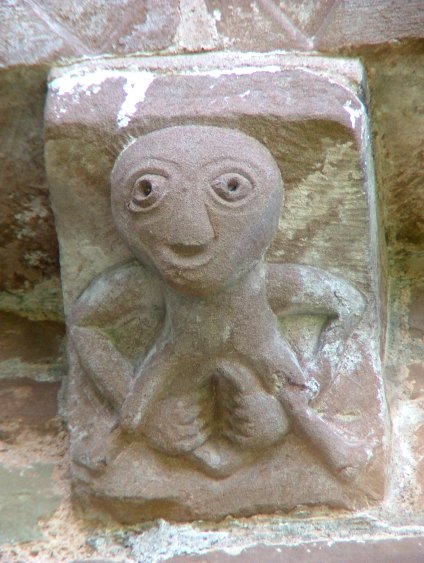
Location : ///puncture.without.informs
The Sheela on Kilpeck Church near Hereford is probably the most famous sheela image. The sheela is not above a door like the sheelas in Tugford, Holdgate and Church Stretton but it does lie adjacent to one. Of all the sheela sculptures this is the one that is most copied and photographed
The Church
The name Kilpeck is derived from Kil or Cell and the name of the saint Pedic or Pedoric. The church is dedicated to St Mary and St David. This St David is not the patron saint of Wales but another local St David. The church at Kilpeck is quite fascinating in it’s own right. The ornately carved door contains elements of Celtic, Saxon and even Scandinavian (Viking) art and is seen as the epitome of the Herefordshire school of sculpture. It is built on a seven sided or egg shaped mound which may indicate the site was used in antiquity but this is open to debate. The church is ornately carved with no less than 89 corbels. The Sheela right is the 28th corbel on the south side of the church. Some of the corbels have been removed, this is supposedly due to a Victorian lady who objected to their subject matter, if this is true, why the Sheela remained is something of a mystery. One explanation may be that the carving has been described as a fool opening his heart to the devil. Other corbels, pictured below, are quite curious and often comical (see the dog & hare). Several of the heads depict monsters who appear with human heads in their mouths. All in all Kilpeck church is absolutely fascinating and well worth a visit.
The Figure
The Kilpeck sheela is undeniably the most well known sheela image and is often referred to as a “goddess”. However despite it’s fame (or notoriety) the figure is rarely seen in it’s actual setting. Once we take the sheela in the context of the rest of the carving on the church then it is a good example of a figure which refutes the “goddess” theory. It is one of a series of corbels each of which are examples of sculptural motifs repeated throughout western European churches. The sheela na gig is just another of those motifs, a very memorable one agreed, but just another motif. It’s origin is firmly rooted in medieval Christianity rather than it being some archaic survival of a goddess figure from antiquity.
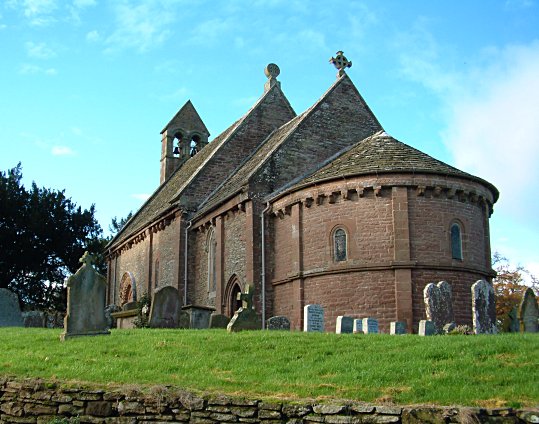
Folklore
There is short discussion about some dubious folklore surrounding the sheela na gig here. J.M. Forbes of the University of Toronto was told a story explaining the sheela: “an erotic sculpted corbel of a woman at Kilpeck was a carving of the patron’s wife and was put up after the patron refused to pay for the carving at the church.” Forbes also relates that he or she was told more or less the same story at three other sites in England as an explanation for “rude” pieces of sculpture.
Roy Palmer in his book Herefordshire Folklore (Logaston Press 2002) relates the story of an old man in the 1920’s who was apparently present at the destruction of a number of obscene figures. “Ah that wur Miss – – -. A never could suffer that un, so a get her a pole and a pothered un off” Palmer speculates that the figures may have been male exhibitionist figures “in a state of arousal” which led to their destruction by the unnamed Miss – – –
A Phallic Counterpart?
The above story begs the question what offended the Victorian lady so greatly? Roy Palmer conjectures that the corbel held a male exhibitionist possibly in a state of arousal which would be incredibly offensive to the Victorian mindset. This raises another question. Why did the Sheela survive? Again this might be down to the Victorian mindset. George R Lewis did a study of the church in 1842 in his snappily titled Illustrations of Kilpeck Church, Herefordshire: In a Series of Drawings Made on the Spot. With an Essay on Ecclesiastical Design and Descriptive Interpretation, described the figure as a fool opening his heart to the devil. It may well be that the destructive Victorian lady saw the Sheela she simply didn’t understand what she was looking at.
Other Sculptures
The Ibex corbel
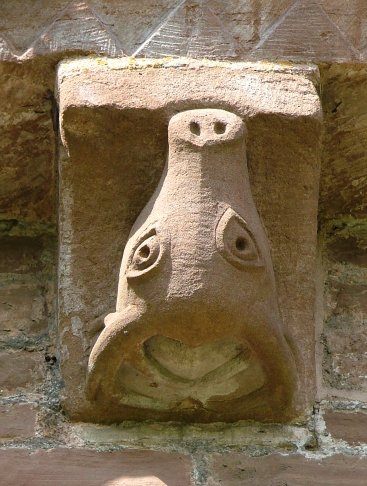
Malcolm Thurlby puts forward a convincing argument in The Herefordshire School of Romanesque Sculpture to link this corbel to the Ibex in medieval bestiaries. The Ibex is portrayed in these bestiaries as having very strong horns which can support the ibex if he falls. The ibex is portrayed as being upside down in these books. This corbel provides evidence that the sculptors used bestiaries as inspiration for motifs and that this piece was intentionally inverted. The church leaflet mentions this corbel but also points out that the figure has antlers rather than the smooth horns that the bestiary portrayals possess and as such this interpretation is open to debate.
The Dog and Hare
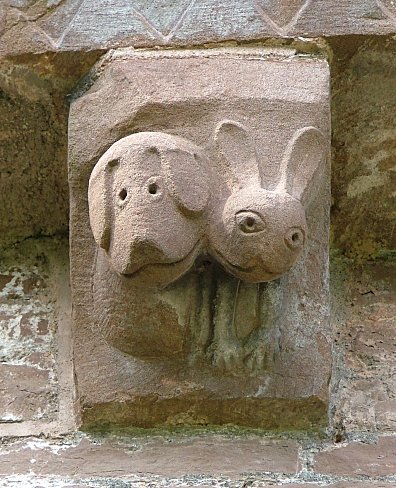
The Lovers
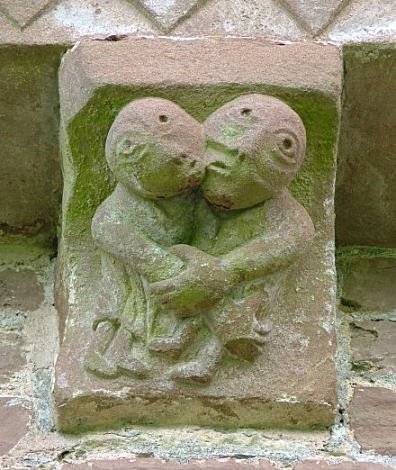
The Fiddle Player
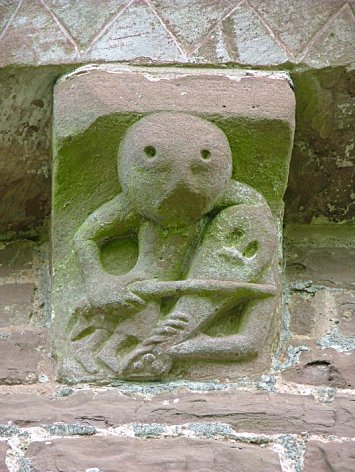
The Falling Man or Miser
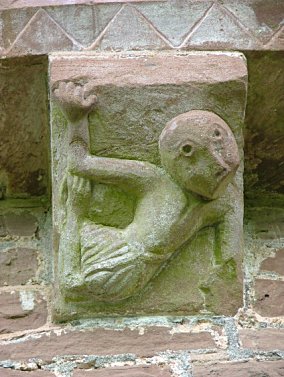
Bear eating Sinners
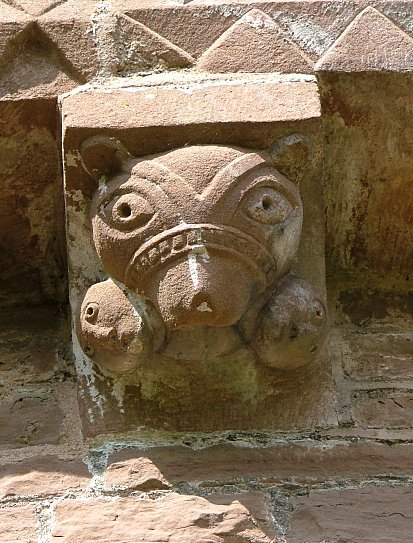
Beakhead Eating a Sinner
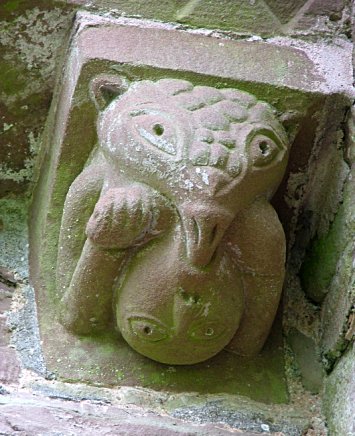
The Church Website
The church now has a website which discusses the church in detail and has some links to a guided tour of the church.
Location
What 3 Words : ///puncture.without.informs